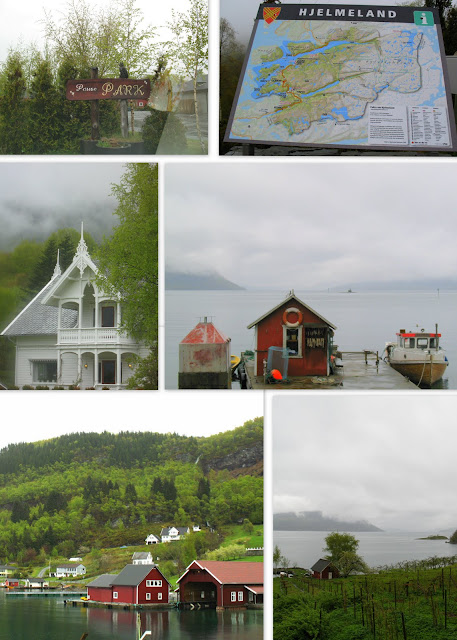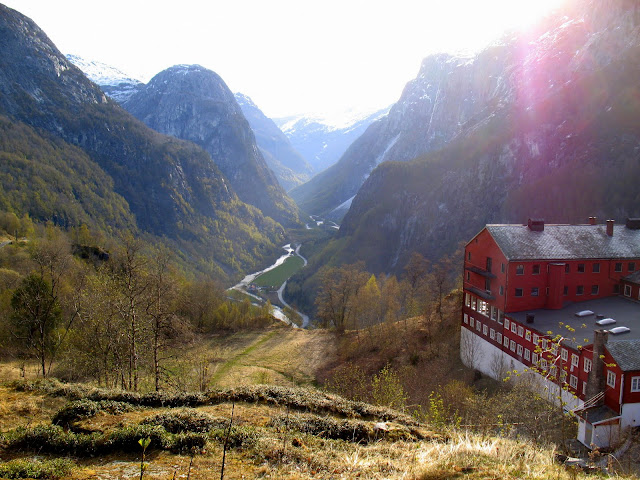Monthly Archives: May 2010
May 17th, Norway’s National Day
Hjelmeland
Preikestolen
Preikestolen, or Pulpit Rock, is one of the most famous destinations in Norway. The cliff juts out creating a plateu 82 feet by 82 feet, resting 1,982 feet above the Lysefjorden, the “light fjord” so named by the light colored rocks making up the cliffs. The fjord is not only long and narrow, in some places it is as deep as the mountains are high (the fjord stops at a depth of 1300 feet below Preikestolen) On the opposite side of the fjord lies the Kjerag mountian, and the famous kjeragbolton, a boulder wedged between a mountain crevice where many hikers stop for a very brave photo.
I stayed overnight at a small campground about a 20 minute drive away from the base. Slovik Campground was a real treat as there was internet access and a bathroom located within the cabin, a heated luxury with a fantastically hot shower I happily utilised after my hike! I began climbing at 6am and made it to the pulpit just before 8am. Despite the cloud covered view it was a beautiful trek and I crossed paths with not another soul until 30 minutes before I was back at the base. I walked into the Fjelstue (mountain lodge) rain soaked, surprised to find the breakfast area jam packed with couples and families enjoying the typical breakfast spread; freshly baked breads, sliced cheeses, meats, cucumbers, and tomatoes, smoked salmon, hard and soft boiled eggs and a small selection of cereals. After finishing off a second cup of hot tea, it still appeared as if the others were not in a big hurry to get on the hike, perhaps many decide not to do it at all with the near guarantee that the climax will be met with white fog versus the gorgeous scene one would find on a clear day. I chose to experience the diluted version versus not experiencing it at all and I am very happy I did.
Stalheim and Surrounds
So while the evenings were spent in the cozy atmosphere of the above pictures, the days were spent working in some of the most incredible locations I have ever seen. The photo shoot was for the performance line of ECCO, a global leader in innovative comfort footwear. The company was founded in 1963 in Denmark by Karl Toosbuy who vowed that the foot should lead the shoe and that comfort should not be a luxury. The small Danish company has now grown to the 7th largest shoe brand in the world but continues to stay true to it’s roots and admirable mission statement.




















